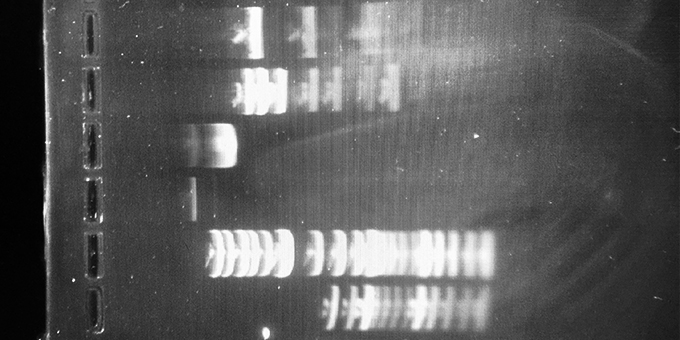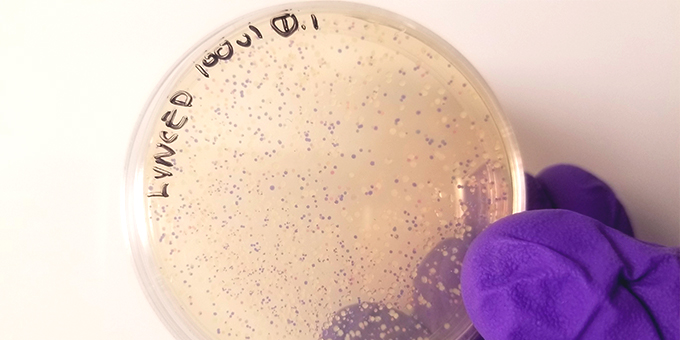
Lynced Torres's Experiments in Synthetic Biology

Design one governance action to ensure an ethical future for biotechnology
There is a particular interest in the studies of genetically modified plants whether this is for the product consumption or for the ability to produce engineered products that can potentially replace energy sources.

Week 2 Lab Assingment
Reading and annotating the sequence files for a DNA molecule. Isolating that DNA from cells, running an enzymatic reaction on it, and showing the changes made.

Week 3 Assingment
In this assignment, we explore the fundamental structure of proteins. The assignment is divided into two parts. Part A takes a deep dive into understanding and analyzing the structure of a protein we select. Part B takes us into the complex world of folding proteins!

Week 4 Lab Assingment
We will be changing the color-generating chromophore of the purple Acropora millepora chromoprotein (amilCP) to a variety of orange, pink, and blue mutants. These divergently-colored genetic variants of amilCP were described by Liljeruhm et al in 2018. Their strategy to identify where to mutate amilCP was inferred by sequence similarities to the chromophore region that allows for spectral engineering of the structurally-characterized and well-known green fluorescent protein (GFP), which is native to the jellyfish Aequorea victoria.

Week 5 Assingment
You will set up a cell-free transcription reaction as shown below where the transcription mix produces fluorescent RNA aptamer called Broccoli, see this work by Filonov et al.

Week 7 Assingment
News of the COVID-19 pandemic dominates all media. There is lots of material about possible scientific solutions to help mitigate the disease. Many university and industrial scientific groups have shifted their attention to this new problem. Imagine that you are a scientist told by your advisor or boss to come up with a plan to make a difference. Possible ways to go about this include therapeutic drugs (small molecules like nucleoside analogs or biologicals like enzymes, antibodies, or nucleic acids), new vaccines, or new or better diagnostics. Here is your assignment:

Week 8 Question Assingment
For this week’s homework, led by Professor Kevin Esvelt of the MIT Media Lab, we will leverage the collective creativity and research skills of students in the class to try and research current unknowns connected to the ongoing COVID-19 pandemic! Given the rapidly evolving scope of the pandemic and the increasing body of research papers and studies that are released daily, a major challenge for the research community is synthesizing and understanding this material. For your homework, we will divide the list of questions below amongst students in the class, and you will do your best to answer each question with the best available studies and research. For each answer be sure to cite any relevant papers and studies, and note whether they have been peer-reviewed or are a pre-print. Answers to the questions can be added directly to the google doc. During the lecture we will build upon this list of questions and add additional ones during the discussion! bioRxiv and medRxiv.

Week 9 Question Assingment
For this week’s homework, led by Nina Tandon of EpiBone, we will answer 3 problem excersises that explore what some of the design considerations looks like in tissue engineering practice.

Week 10 Assingment
For your final projects, you are writing detailed grant proposals to support your project ideas. Ginkgo Bioworks is taking proposals to leverage the use of their platform to support technical projects; how might you leverage Ginkgo’s technical platform to support your project? Write a detailed description of how you would utilize their platform. What tools and capacities would you use? How would you use them? How would the use of Ginkgo’s platform accelerate or increase the technical capabilities of your project?

Final Project
The relevance of this research points and critiques at the ubiquitous nature in which plastics are used in the daily lives of the human population by the design of a product and process that uses DNA construct and fabrication to create a glowing mycelium lamp of 4 different fluorescent colors generated from the Acropora Millepora sequence. It utilizes the tools and steps described in Next Generation Synthesis and Bioproduction to develop a product that uses less energy in its design and fabrication. The ethical future of implementing a project like this involves using the guidelines stated in a BSL-2 lab and proper disposal of its wastes to make sure the contents do not contaminate the natural environment.

The Architectural Potentials of Biologically grown materials.
The global environment is at a critical point in which the methods and actions to reduce the planet’s degradation are highly necessary. The Green New Deal is a resolution that calls for the investment of policies and plans that play a significant role in the way people will relate to their physical environments. To achieve those goals, the plan calls for the launch of a “10-year mobilization” to reduce carbon emissions in the United States. Such a proposition has the potential to call for ideas that would inevitably affect the way we eat, the way we travel, the way design, and the way we live. The scale of this issue is immense, but when evaluated through an architectural lens, it highlights a valuable critique on the processes and methods of how we build and what we build with.
How to Grow Almost Anything